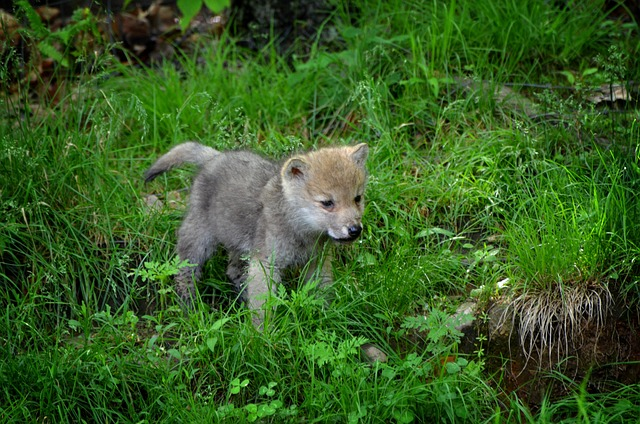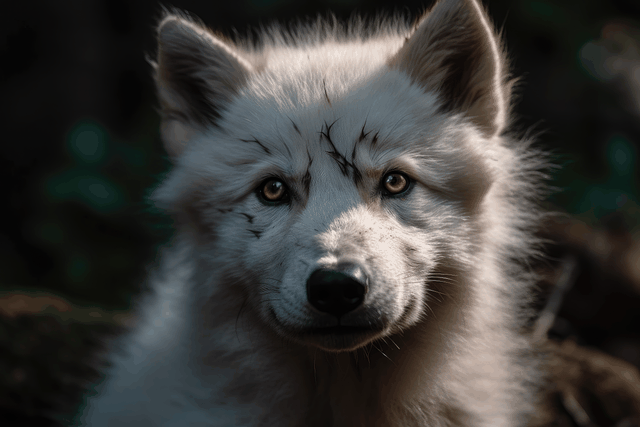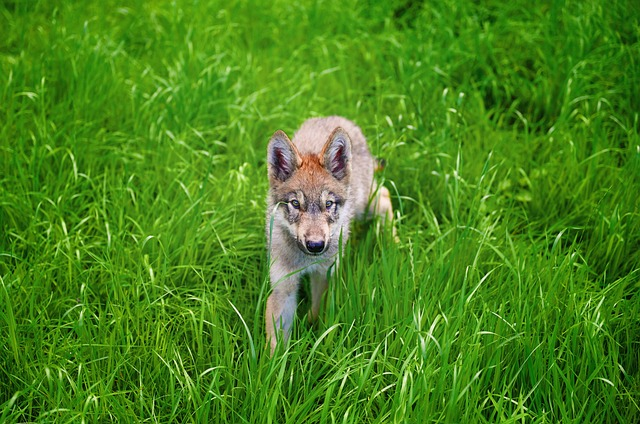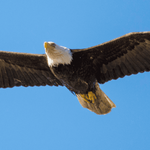Do you ever wonder how many pups a wolf can have? Gray wolves, the most common species in North America and Eurasia, typically have four to six pups per litter.

The exact number of pups depends on several factors, such as the availability of food, the female’s health, and the age of the parents.
Older parents tend to have fewer pups, while younger parents are likely to have more litter.
On average, gray wolves in the wild have three to five pups per litter, although they may have up to 14 pups at once.
Wolves usually mate for life and live in packs that consist of an alpha male and female as well as their offspring. In this blog, we will explore more about wolf pups.
How Many Pups Does a Wolf Have in One Litter? Facts & Growth Stages

How Often Do Wolves Mate?
Wolves are social animals that mate for life. Gray wolves, the most widely distributed wild canid species in the world, form mated pairs and produce pups every year.
On average, wolves mate once a year, depending on the availability of food and suitable denning sites. After courtship rituals, mating usually occurs during winter or early spring.
The female wolf is in the heat for only a few days, and during this period, the male wolf follows her closely while they search for an isolated area where they can mate safely.
How Many Pups Are There in a Wolf Litter?
The average size of a gray wolf litter is six to eight pups, although some may have as many as thirteen. Litter size also generally increases in areas with abundant prey and good habitat, which provide enough resources to support larger litter. Litter size is also affected by the age and health of the mother and her access to nutrition during gestation
How Many Pups Do Wolves Have In a Lifetime?
Wolves are incredibly social animals and typically form long-term, monogamous bonds with a single mate.
On average, grey wolves have 4 to 6 pups in one litter per year. And in their whole lifespan of 12 years, they give birth to 28 to 84 pups.
Depending on the availability of food and their environment, Wolves may have more or fewer pups each year.
Wolves are also great parents and take care of their young for several months until they can hunt with the pack.
Factors that May Affect the Survival Rate of Pups In a Litter
The survival rate of pups in a litter can be affected by various factors, including the number of pups born and environmental conditions.
Gray wolves usually breed in February and March and give birth to five pups per litter in May or early June.
Sadly nearly 60% of the wolf litter die in the first year of their birth, and only less than half are left to survive in the wild.
These pups die due to starvation, diseases, or getting hunted by predators such as grizzlies and eagles. Moreover, humans hunted them to acquire their fur. Other factors include harsh climates, food resources, and temperatures that affect their survival in the wild.
Are Wolf Pups Born Blind and Deaf?
Gray wolf pups are born completely blind and deaf. In fact, they actually open their eyes when they are 2 weeks old and are able to hear noises when they are 3 weeks old.
Initially, they rely heavily on the warmth of their mother’s body, as well as her call, to locate her when they are hungry or scared.
Which Wolves Breed in the Pack?
Wolves live in a pack, and the breeding pair is usually made up of the strongest alpha female and male. This breeding pair generally dominates the other members of its pack.
The other wolves may help raise their young. Wolves are very protective of their young, and the alpha female is typically the primary caretaker.
The pack will work together to raise and protect their offspring, which is a key part of wolf social behavior.
All members of the pack play an important role in raising pups, providing food, and teaching them survival skills.
How Quickly Do Wolf Pups Grow?
Wolf pups grow rapidly and can become full-sized adults in just a few months. Gray wolves, the species most commonly found in North America, typically reach adult size within 1o month.
By this time, they are capable of hunting and reproducing on their own. Wolf pups start off relatively small at birth, weighing only a few ounces. They feed off their mother’s milk for the first four weeks and then begin to eat solid food.
During the next several months, they grow rapidly, often gaining up to 2.6 to 3.3 pounds each week.
By the time they reach adulthood at ten months, gray wolves can weigh anywhere from 40-150 lbs.
Different Growth Stages Of a Wolf Pup

Transitional Period (2 to 4 Weeks)
The transitional period starts after 15 days when the pup opens his eyes. They can not see clearly at this stage, and their front teeth start to grow.
Moreover, they can’t chew their food on their own, so they survive on their mother’s regurgitated food. However, they start to communicate and start moving physically.
Socialization Time (3 to 11 Weeks)
At this life stage, their sense of hearing activates, and they start hearing the sound around them.
Further, their canines and premolars begin to grow. And they start moving out of their dens to explore the world.
After reaching this stage, the wolf mother leaves the pups alone and carefreely goes out hunting for hours to get food for her pups.
After 7 to 8 weeks, they start showing their dominant behavior. Amongst the litter, the most curious pups sometimes start to go out with their mother.
Juvenile Period (8 to 16 Weeks)
Pups at this stage are like teenagers. After reaching this point in life, they prepare their play sites, go out of the den, and start eating the food which their mother hunts for them.
Moreover, they join their mother in the hunting ground, follow her guidance, and become her mentee. They are even able enough to return to their dens on their own after the hunting finishes.
Additionally, the color of their eyes changes from blue to golden yellow, and their adult hairs also come to visibility. At this period, a wolf pup weighs around 22 to 30 pounds.
Fast Growth Duration (14 to 27 Weeks)
At this period, wolf pups experience rapid growth, as their milk teeth start to fall and their permanent teeth start to emerge. They actively participate and help adult wolves while hunting.
Furthermore, they also start gaining weight which increases around 1.3 pounds per week. With this, their thick furs also start to grow, but one thing that differentiates them from adult wolves is their small size.
Slow Growth Period (27 to 51 Weeks)
Their growth continues, but after the 27th week, their growth frequency slows down. For example, a male wolf pup gains nearly 0.7 pounds weight and a female wolf pup gains 0.4 pounds weekly. Their slow growth is a point when pups start to step into their adult life.
Sexual Maturity Stage (1 to 3 Years)
At this stage, their growth cycle ends up, and pups start to express dominant and submissive behavior to recognize their social hierarchy in the pack. And finally, the grown pups become able to reproduce and start their own pack or join the already available wolf’s pack.
Final Words
Grey wolves in particular typically give birth to a litter of four to six pups. While numbers may vary from pack to pack, the average litter size for grey wolves is 4-6 pups, although some can have litters as large as 12.
Therefore, the average wolf has around 4-6 pups in each litter. Furthermore, wolves are typically monogamous, and they mate for life, which can help with pup survival rates.
Wolves also have extensive parental care skills, which help ensure their offspring’s safety from predators and ensure their successful transition into adulthood.
All these factors contribute to the successful breeding of wolves and the continued conservation of this species. Check out the video below for more information.
Frequently Asked Questions
How many wolf pups survive?
In a litter, there are around 5 to 6 wolf pups, but their survival rate is 50% which means that only 2 to 3 pups survive successfully in the wild.
How often do wolves have pups?
The wolves give birth to a litter of pups once a year.
How many litters can a large wolf pack have?
In wolves, a larger pack has 2 to 3 litters of pups, and more than one female is involved.
How many wolf cubs are born at once?
Usually, 4 to 7 pups are born in a litter.








